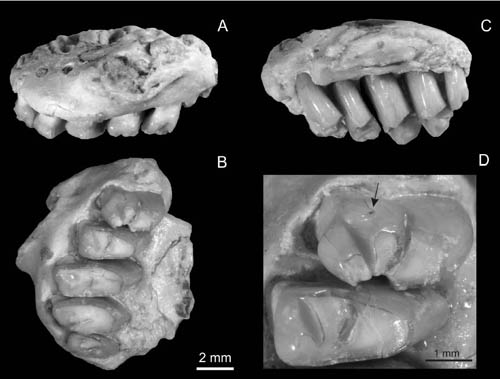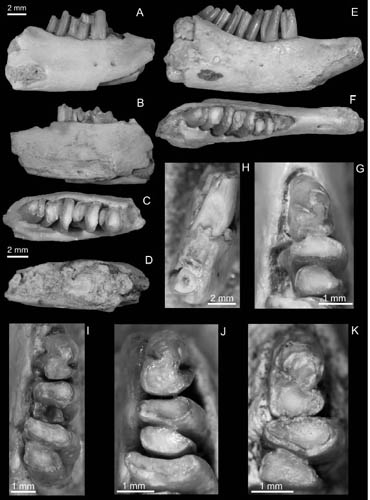The earliest fossil remains referred to Lagomorpha come from China (Nei Mongol), India (Gujarat), Kyrgyzstan (Batken), and Mongolia (Ömnögovi). The fossil record from China is most abundant and complete. There are six lagomorph genera known from the late Early and Middle Eocene of China. Among them, Dawsonolagus exhibits the most primitive character array for the group and is known from the most complete material. Gobiolagus, with six currently recognized species, is still one of the earliest lagomorphs appearing in the early Middle Eocene of Central Asia, but generally it is rare and not very numerous.
Paleontologists from Institute of Vertebrate Paleontology and Paleoanthropology (IVPP), Chinese Academy of Sciences, and American Museum of Natural History, described a new species, Gobiolagus aliwusuensis, from the Middle Eocene locality of Aliwusu of Erlian Basin, Nei Mongol, China, adding new data on the morphology and diversification of Middle Eocene lagomorph fauna in Central Asia. Researchers reported in the latest issue of Vertebrata PalAsiatica 2012(3).
The newly described specimens (housed in the IVPP, Beijing) were collected during the IVPP field expedition in 2008. Material consists of fragmentary maxillae and mandibles with partly preserved dentition. Most specimens are permanent dentition but some deciduous teeth are preserved in the associated maxilla-mandible pair. The material represents all dental loci, apart from the upper incisors, and a range of dental stages, from lightly to very strongly worn teeth, thus covering juvenile to mature ontogenetic stages.
The new material represents a considerably numerous sample of Gobiolagus, a lagomorph genus known mainly from the Shara Murun region of Nei Mongol (Inner Mongolia), China, from which four out of six hitherto recognized species were known.
Gobiolagus aliwusuensis is characterized by its medium size, accessory cusp on the anterior wall of P3 central lobe and by two distinct buccal cusps on P4. The material from Aliwusu constitutes the only record of Gobiolagus with complete upper dental rows, which contain previously unknown P2 and M3.
“The new material adds important data on the dental morphology of Gobiolagus, because it includes some complete dental rows, with unknown so far P2 and M3”, said Lucja Fostowicz-Frelik of American Museum of Natural History, first author of the study, “Furthermore, many of specimens express only light wear, thus giving an insight into the early stages of dental development, unknown from the previously studied samples. Finally, the presence of a new species of Gobiolagus in the Middle Eocene of Erden Obo (Urdyn Obo), Nei Mongol, points to higher than previously thought, diversity of this early Asian lagomorph genus”.
This project was supported by the Chinese Academy of Sciences, the National Basic Research Program of China, the National Natural Science Foundation of China, and Special Fund for Fossil Excavation and Preparation of Chinese Academy of Sciences.

Fig.1 Right maxilla with P3–M3 of Gobiolagus aliwusuensis sp. nov. (holotype) from the Middle Eocene Erden Obo site of Nei Mongol, China. A–C. buccal, occlusal, and lingual views; D. magnification of P3–P4, note accessory cusp on P3 (arrow). (Image by IVPP)

Fig.2 Variability in morphology of maxilla and upper dentition of Gobiolagus aliwusuensis sp. nov. from the Middle Eocene Erden Obo site of Nei Mongol, China. (Image by IVPP)

Fig.3 Mandible and lower dentition of Gobiolagus aliwusuensis sp. nov. from the Middle Eocene Erden Obo site of Nei Mongol, China. (Image by IVPP)


